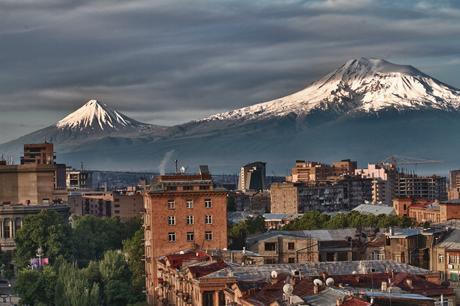
The 5165-m-high, double-peaked stratovolcano Mount Ararat, also known as Agri Dagi, is Turkey’s highest, largest volume, and easternmost volcano.Glacier-clad Ararat, along with its twin volcano, 3925-m-high Kucuk Ararat (or Lesser Ararat), covers an area of 1000 sq km at the eastern end of a SSW-ESE line of volcanoes extending from Nemrut Dagi. Construction of the Greater and Lesser Ararat volcanoes was followed by a period of extensive flank eruptions, many erupted along N-S-trending fissures. The initial stage of flank eruptions produced a cluster of cinder cones and dacitic-rhyolitic lava domes surrounding Greater Ararat and a series of pyroclastic cones and domes on the western flank of Lesser Ararat. Late-stage activity formed large pyroclastic cones lower on the flanks of the two volcanoes. Ararat appears to have been active during the 3rd millennium BC; pyroclastic-flow deposits overlie early Bronze Age artifacts and human remains. Karakhanian et al. (2002) reported historical evidence for a phreatic eruption and pyroclastic flow at the time of a July 1840 earthquake and landslide.
* Information on the traditional uses and properties of herbs/ animals/ yoga/ places are provided on this site is for educational use only, and is not intended as medical advice. all image credit goes to their Photographers.
